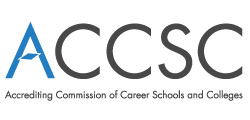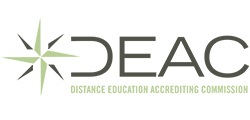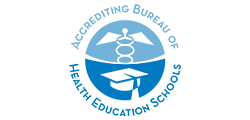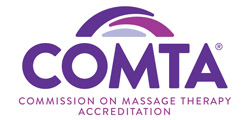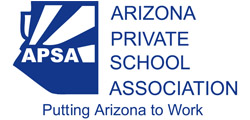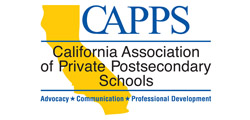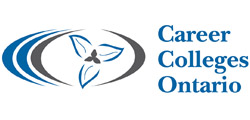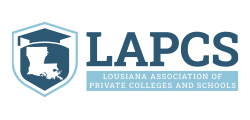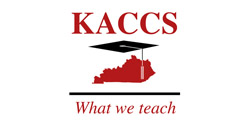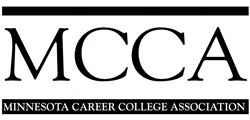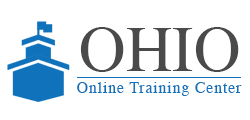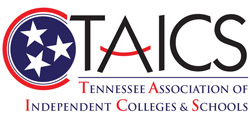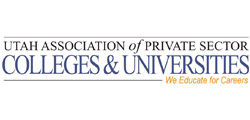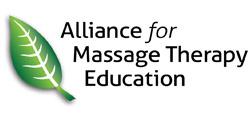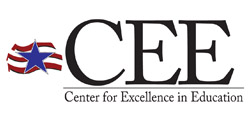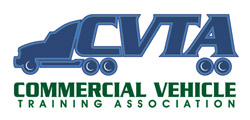Badge Evidence | Completed Courses (4 Hours Each)
CM151Onsite Visits - Be Ready Anytime
Is your campus ready for a full unannounced visit at any time? Onsite visits are becoming more frequent in recent years and unannounced visits even more so. This training is designed to aid campus leaders to be prepared, using best practices and practical tools, to host an onsite visitor at any time, including visits that are unannounced, by any organization such as state agencies, veterans' organizations, regional, national and programmatic accrediting agencies and the Department of Education.
CS122Teaching LinkedIn Strategies for Career Success
In today's digital labor market, a strong online presence is a necessity. As the world's largest online professional network, LinkedIn is a critical platform for anyone serious about building their professional online presence and advancing their career. However, many learners may not know how to make the most of this powerful tool, and as a career professional, it's your job to help them succeed. This course will equip you with the knowledge and skills you need to teach your learners how to create a standout LinkedIn profile, expand their professional network, and tap into valuable resources that can help them stay ahead in their field.
*The course contains multiple done-for-you tools and resources for download and use with learners.
EC115Integrating Career Readiness Into Your Courses: Part I
This course will provide an overview of career readiness including information and activities that may be incorporated into your courses. This course, which forms Part I of a two-part series, provides details about four specific career readiness skills: critical thinking/problem solving, verbal/written communications, teamwork/collaboration, and information technology applications. Additional thoughts and resources will also be provided to allow you to consider multiple ways to assist students in developing these skills in your courses.
ED101Effective Teaching Strategies
This introductory course covers the essential roles of a teacher and the competencies required to be a successful instructor in an educational institution. Proven techniques and strategies for planning and preparation are presented and discussed. In addition, the course offers effective methods for conducting the first class meeting and delivering course content. This course provides a solid foundation for new instructors and serves as an excellent refresher for more experienced instructors.
ED103Student Learning and Assessment
Educators work with students who want to learn specific skills that will lead to fulfilling careers. As educational instructors it is our job to help each student to achieve this goal. Just as you may have a particular style of teaching that you prefer, your students have preferred ways of learning. This course will help you to identify the different learning styles of your students so that you can adjust your instruction to better accommodate them. Good teachers also regularly monitor the effectiveness of their instruction by assessing their students’ learning. This course will examine several aspects of assessment including how to create good tests, how to ask effective questions and how to get your students to actively participate in their learning by asking questions themselves.
ED104Class Management Strategies
This course provides methods and techniques for managing students and class activities. We start by reviewing the steps instructors need to follow as they introduce a class to new students. We then discuss strategies to effectively deal with unfocused and challenging students. The course ends by describing common mistakes made by instructors and ways to avoid them.
ED106Enhancing Student Learning
This course provides methodologies and examples to help instructors increase content retention and application by students in need of support. The course starts by covering the skills needed by instructors to be clear communicators. We then discuss ways instructors can become effective in monitoring students and using student groups as learning tools. The course concludes by covering techniques and strategies to instruct diverse learners, including learners with disabilities.
ED107Creating an Accelerated Learning Environment
Retention is an issue, and what happens in the classroom is a critical factor influencing a student's decision to stay or go. The classroom environment may be hurting your students' view of the quality of your programs. In this course, you will learn tips and techniques to deal with environmental influences such as your role as the instructor, the classroom, the interactive activities, the support materials, and the sequence of instruction as well as other subtle influences. You will learn to view the environment from the student's perspective to increase your teaching effectiveness and student retention.
ED110Time and Stress Management for Instructors
Outstanding teachers serve their students by guiding them through their coursework and motivating them to complete program requirements. Instructors at educational institutions are often faced with high stress resulting from heavy teaching loads and limited time. When teachers cannot manage their own time and stress, they cannot fully serve the needs of their students. This course will show instructors how to manage time and stress in their lives and teach some of these skills to their students.
ED112Influencing Student Motivation
This course is intended to offer a practical explanation of how an instructor’s behaviors and choices can influence the motivation of students. It is not intended to be a theoretical or academic treatise about motivation. Module 1 offers useful tips that may help instructors to motivate students. Students’ security and autonomy are described as they influence motivation during instruction, questioning, activities, and evaluations. This is followed by a discussion of how motivation can be improved by enhancing students' sense of autonomy when making assignments, selecting instructional methods, implementing classroom procedures, and developing evaluations. In Module 2, intrinsic and extrinsic motivators are defined and compared. Finally, a variety of "miscellaneous motivators" are offered for instructors to consider.
ED115RSoft Skills for Instructors
This survey course provides an introductory discussion about how good soft skills help instructors to be successful. A distinction is made between hard skills, soft skills, people skills, and workplace behaviors. Selected soft skills are listed for various categories of businesses and industries, including the teaching profession. Two studies are referenced that highlight skills that are frequently cited in the literature. One study was published in 1997, while the other was conducted specifically for this course in 2024. Selected tips are offered for improving one's soft skills. Numerous hyperlinks are included that direct the reader to a variety of online enrichment materials, including a few online instruments that help individuals learn more about their own soft skills.
ED137Cultural Diversity: Including Every Student
Cultural diversity includes a wide scope of differences. While we plan instruction to meet outcomes that are usually supporting a set of pre-determined standards, instructors are faced with a high level of diversity in every class group. It is important for instructors to be aware of diversity and strive to include every student, regardless of difference, in their learning community. This requires intentional planning and accessible instructional design that includes all students and empowers every student to succeed.
ED205Enhancing Students' Professional Skills
Awareness has grown in recent years that, to be effective today, learning must include more than knowledge and "hard skills," or technical ability. In a world where work is often team-based and project-driven, teaching needs also to encompass attitudes and social competencies. This course will describe ways students can enhance their professional skills across the curriculum. Strategies for teaching effective personal interaction and ways to support student professional growth and development will be discussed. This course will also explain how students can improve their writing skills and computer literacy across the curriculum.
ED402Fostering Soft Skills in the Classroom I
This class will review communication, collaboration, and time management soft skills that can be instilled to help a student excel not only in the classroom, but also on the job. A variety of ideas and methods to implement the growth of those soft skills will also be shared in the course. Learning content is only part of the goal to empower students and graduates to be attractive to potential employers. The human side of the business world - the people - is what makes a company great, so it is imperative to foster the learning of both content and soft skills as students travel on their educational path to a job and career.
ED406Motivating Others
Motivation can be the difference between success and failure. In this course, the idea of how motivation impacts people will be discussed. Activities will focus on improving motivation in students, and other people you interact with, as well as yourself. The goal of this course is to help develop a better understanding of the topic, and produce tangible resources to help implement plans, strategies, and ideas at your institution. In addition to lecture videos, resource links, and assessments, you will be able to utilize Learning Activities, which will continue to be useful after successful completion of the course.
EL102Online Teaching Techniques
Your degree of success as an online instructor relies heavily on several factors, among which are your level of preparedness before the date on which the course is launched; your ability to make a smooth transition into the roles and responsibilities associated with teaching in an online environment; and the effectiveness and efficiency with which you manage learners, instructional transactions embedded in the course as well as the learning environment. In this course, you will learn how to project your authority and presence into the e-learning environment, build a relationship with each learner, promote and nurture learner participation, provide informative and constructive feedback in a timely manner, minimize attrition, manage communications, manage unacceptable behavior and resolve disagreements.
LS101RDo You Manage Or Lead?
This course explores the critical differences between management and leadership. Participants will be introduced to definitions and myths about each area as well as how management and leadership must coexist for an organization to operate effectively. Participants will explore their own management/leadership tendencies through exercises to see leadership and management in action.
LS102How Do You Lead?
Not everyone is suited for, or desires, a leadership position. One of the first steps to being an effective leader is to understand the desire to lead in the first place. Participants will explore their motivation to lead and develop a deeper understanding of their leader style(s).
LS103RYour Leadership Impact
To improve your impact and effectiveness as a leader, you must not only understand the role of a leader, but you must also take into consideration the followers and the situation. This course defines leadership impact and explores the interactional framework for leadership.
LS104RYour Leadership Legacy
The higher education industry provides a wealth of opportunities and challenges for those seeking leadership positions. In this course, participants will gain a deeper understanding of the higher education sector and themselves. The importance of higher education institutions will be explored along with developing a personal leadership legacy.
LS105RYour Leadership Toolkit
Get ready to add a number of skills to your toolkit as you develop as a leader! This course focuses on increased self-awareness in communication styles and learning; developing deeper understanding through empathic listening; and motivating through innovation.
ML111Leading and Motivating
This course provides a synopsis of the essential tasks of leadership setting direction, aligning people, and motivating others. You will learn how to recognize the skills and characteristics of effective leaders, create an inspiring vision, and energize people to support and work toward your goals.
ML117Presentation Skills
This course provides sound advice on preparing and delivering presentations that command attention, persuade, and inspire. It includes rehearsal techniques as well as tips for creating and using more effective visuals. The course also addresses the importance of understanding your objectives and your audience to create a presentation with impact.
ML122Difficult Interactions
This course will show you how to discuss and resolve difficult interactions in the workplace - whether with employees, peers, bosses, or even suppliers and customers.
ML125Managing Diversity
In this course, you will learn how to manage diversity to extract maximum value from your employees' differences - including how to recruit diverse talent, resolve diversity-related conflicts, and communicate with employees and customers from other cultures.
ML135Time Management
This course will help you master effective time management techniques. You will learn to analyze how you currently spend your time and pinpoint opportunities for improvement. The course will show you how to plan your time efficiently using scheduling tools, control time-wasters, and evaluate your schedule once it is underway.
ML136Stress Management
In this course, you will learn the difference between positive stress that enhances productivity and negative stress that breeds tension, lowers productivity, and undercuts job satisfaction. The course includes strategies for dealing with underlying causes of worry and stress, with tactical advice and coping mechanisms for immediate problem management.
ML147Decision Making
In this course, you will learn how to identify underlying issues related to a decision, generate and evaluate multiple alternatives, and then communicate and implement your decision.
ML148Strategic Thinking
This course provides practical advice for managers in charge of shaping and executing organizational strategy. The course includes tips for analyzing opportunities, challenges, and the potential consequences of high-level action plans. It also addresses identification of broad patterns and trends, creative thinking, analysis of complex information, and prioritization of actions.




